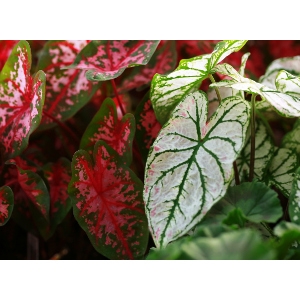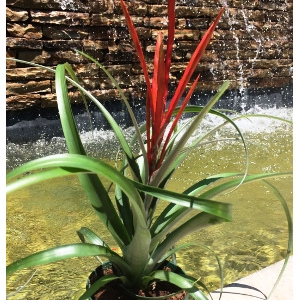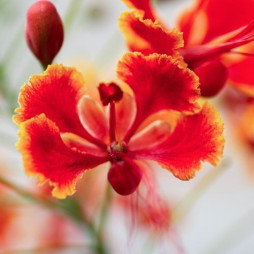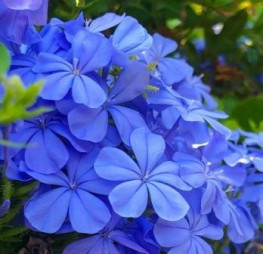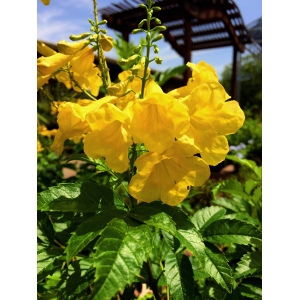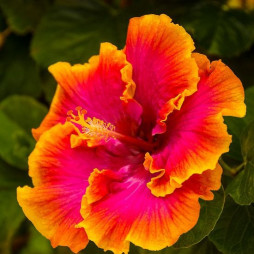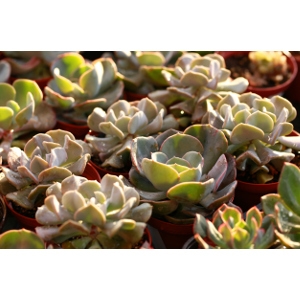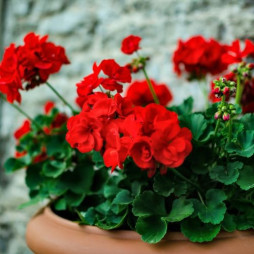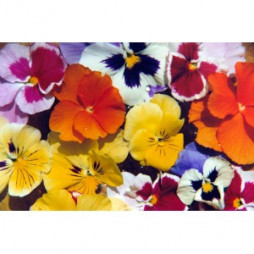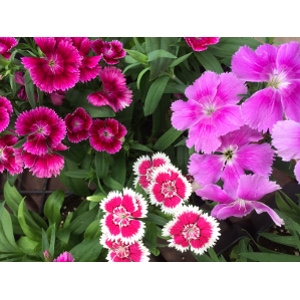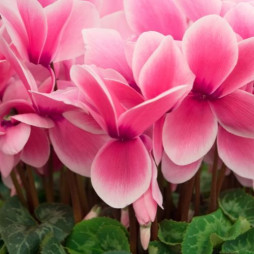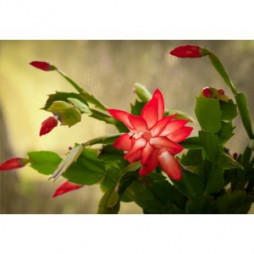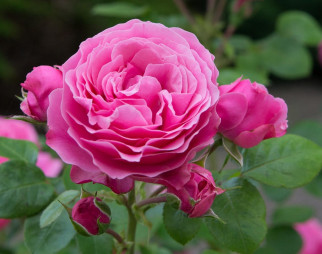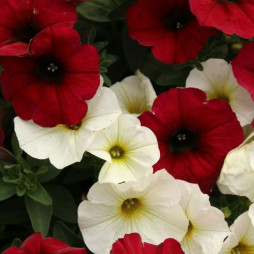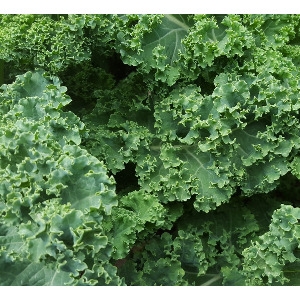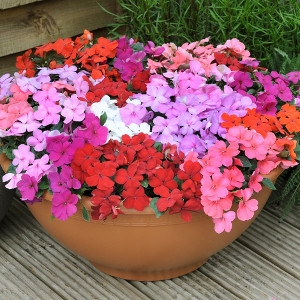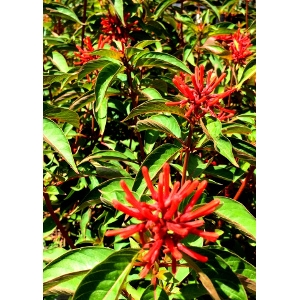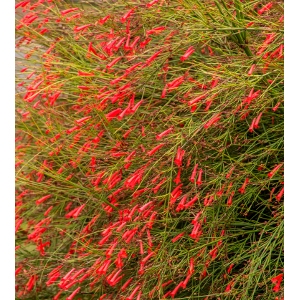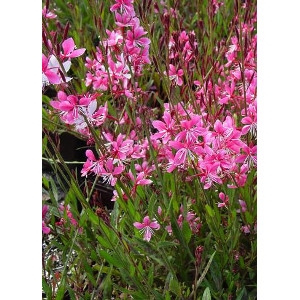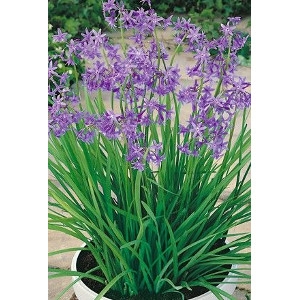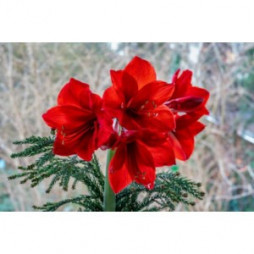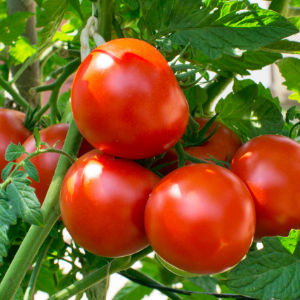Product Catalog
Description
Big, heart-shaped leaves that display amazing color combinations of white, pink, red and green best describe caladiums. They love hot, humid weather and grow best in full to partial shade, though most varieties can also be grow in full sun as long as they get plenty of water. This provides multiple options for planting caladiums in gardens, landscapes, and combining them with other sun loving annuals, perennials and bulbs. Decorate outdoor sitting areas with caladiums since they grow well in pots and planters and are the perfect solution for brightening a shady porch or a covered deck. They also brighten up window boxes and hanging baskets and make a colorful border along a sidewalk or flowerbed.
Rates
Please contact us for current pricing and availability.
Description
There are more than 650 types of air plants, scientifically identified as Tillandsia, that can grow—and thrive—without soil and come in all sizes and colors. Air plants are probably the easiest plant to grow so it's perfect for gardeners who tend to have a "black thumb." Although air plants used to be a rare greenery, these hardy plants have become popular in the past couple years. Many air plants grow with strap-shape or slender triangle-shape leaves, and most have attractive tubular or funnel-shape flower and are native to the southern United States, Mexico, Central America, and South America.
Rates
Please contact us for current pricing and availability.
Description
The national flower of Barbados is one of the most attractive heat loving plants for Central Texas. The species name pulcherrima literally means “very pretty” and it definitely lives up to the name. The blooms are clusters of orange-red with a tinge of gold on the edges. Easy to grow in alkaline to acidic, well-drained soils, fast growing and bloom best in full sun. Considered drought tolerant once established. Great for attracting butterflies.
Rates
Please contact us for current pricing and availability.
Description
Beautiful blasts of blue best describe plumbago, a native of South Africa. With its’ ease of growth, minimal basic needs and negligible pest and disease problems, it is a nearly perfect choice for those who like to think of themselves as plant killers. Plumbago requires very little care and fulfills a variety of needs in the landscape. It is fast-growing and has light-green oblong leaves which are evergreen and stay the same color in winter, providing an attractive, year-round frame for its fragrant, phlox-like sky-blue flowers. To encourage its best growth and performance, plumbago should be planted in soils that are slightly acidic and drain well. It tolerates partial sun and partial shade, but the flowers it produces won't be as numerous as those of plants grown in full sun conditions. One of the best things about plumbago is that it's moderately tolerant to drought conditions, especially once it’s established in the landscape. Watering once every week or two is sufficient.
Rates
Please contact us for current pricing and availability.
Description
Also known as yellow bells, hardy yellow trumpet, or yellow alder, the tropical esperanza is easily recognized by its large masses of lightly scented, golden-yellow, trumpet-shaped flowers amid the dark green foliage. It is native to Texas and found growing wild on rocky slopes near San Antonio and in the Trans-Pecos region and blooms from spring through fall. While esperanza perennials are grown in the landscape as shrubs or container plants for their beauty, they were once quite popular for their medicinal use as well.
Esperanza needs to be grown in warm conditions; preferably in full sun though afternoon shade is suitable as well. While esperanza can tolerate a wide range of soil conditions, it’s preferable they be given fertile, well-draining soil. Therefore, any poor soil should be amended with compost to improve its overall health and drainage. Esperanza is extremely heat and drought tolerant.
Rates
Please contact us for current pricing and availability.
Description
The hibiscus is a national symbol of Haiti and the national flower of nations including the Solomon Islands and Niue. Known for their showy flowers, hibiscus are an easy way to add a tropical flair to your garden. When you know how to care for hibiscus plants, you will be rewarded with many years of lovely flowers. Although warm, humid conditions are ideal for tropical hibiscus, you may want to provide a little afternoon shade when it’s overly hot. Whether in containers, flowerbeds or landscape shrubs, hibiscus are a wonderful addition to attract butterflies, bees, and hummingbirds.
Rates
Please contact us for current pricing and availability.
Description
Succulents form a vast and diverse group of plants, offering easy-care choices for your home. They look stunning planted alone or as companions and offer an almost endless color variation. Echeveria is the perfect plant for forgetful gardeners.
Rates
Please contact us for current pricing and availability.
Description
Beautiful and extremely popular flowering plants that grow well both in the garden and in containers, Geraniums are popular for their bright and sometimes fragrant flowers, but they bring with them the extra bonus of being especially good companion plants. They come in a wide range of colors, from white and red to various shades of pink and purple. Growing geranium plants is easy as long as you can give them what they need. Depending on where or how you grow geranium plants, their needs will be somewhat different. Indoors, geraniums need lots of light for blooming but will tolerate moderate light conditions. These plants need to be grown in well-draining potting soil as well. When growing geraniums outdoors, they require moist, well-draining soil similar to that of indoor potting soil with equal amounts of soil, peat, and perlite. Locate your geraniums in an area with at least six to eight hours of sunlight. Mulching the plants is also recommended to help retain moisture.
Rates
Please contact us for current pricing and availability.
Description
Pansies are cheerful, multi-colored flowers that among the first of the season to offer winter color and will continue to bloom into the early spring. Today’s hybrid versions are more adaptable to heat than those of the past with larger blooms displayed and more vigor. They prefer a full or part sun location and are happy in hanging baskets, combination containers and flower bed borders. Proper preparation of the soil goes a long way in helping keep your pansies happy. Work in organic material such as compost or well rotted leaves to a 4-inch depth before planting. This accommodates the growing pansy’s need for well-draining soil and provides nutrients as the organic material decomposes. When growing pansies in well-prepared soil, the need for fertilization will be minimal. Pansies also prefer acidic soil and for longer blooming periods and the equation is simple: water and deadhead them.
Rates
Please contact us for current pricing and availability.
Description
Dianthus, also known as “pinks”, belong to a family of plants which includes carnations and are characterized by the spicy fragrance the blooms emit which is hints of cinnamon or clove. They can be found most often in pink, salmon, red and white hues. Dianthus are small and usually between 6 and 18 inches tall and also called Sweet William. The foliage is slender and sparsely spread on thick stems. Blooming typically lasts from May to October but known to last much longer. Plant in full sun, partial shade or anywhere they will receive at least 6 hours of sun and they need fertile, well-drained soil that is alkaline. Water them only at the base of the plant to keep the foliage dry and prevent mildew spotting. Deadheading is extremely important to reduce volunteer plants and to encourage additional blooming.
Rates
Please contact us for current pricing and availability.
Description
Cyclamen are part of the Primrose family and the plant was a favorite of artist Leonardo Da Vinci, who used them to decorate the margins of his manuscripts at the beginning of the 16th century. They are generally winter and spring flowering plants that are available in a wide array of colors including white, red and ranging from light to dark pink. It is a perennial plant that is versatile, as it can be used as an indoor plant or can form part of flowerbeds in the garden or containers. With flowers typically appearing between December and May, they enjoy potted positions with a good degree of light, but away from direct sunlight. They also benefit from adequate ventilation.
Rates
Please contact us for current pricing and availability.
Description
This popular, winter-flowering houseplant, one of the most exotic-looking flowers in the plant kingdom, makes a great addition to nearly any indoor setting by providing a burst of red color for the holidays. Christmas cactus is not only easy to care for but propagates easily too, making it an exceptional candidate for holiday gift giving. It is Christmas cactus performs well under average home conditions with moderate care. It will adapt to low light conditions, but the plant will produce blooms more readily if exposed to brighter light. That being said, too much direct sunlight can burn its leaves, so keep the Christmas cactus in an appropriate area to avoid this. Christmas cactus moisture is important as well. The plant requires frequent and thorough watering, during its active growth in spring and summer, keeping the soil slightly moist. Allow Christmas cactus moisture levels to drop and dry out some between watering intervals, but never completely, and never let the plant sit in water.
Rates
Please contact us for current pricing and availability.
Description
Roses have a long and colorful history. They have been symbols of love, beauty, war, and politics and have been used as confetti at celebrations, for medicinal purposes, and as a source of perfume. It wasn't until the late eighteenth century that cultivated roses were introduced into Europe from China. Most modern-day roses can be traced back to this ancestry. These introductions were repeat bloomers, making them unusual and of great interest to hybridizers, setting the stage for breeding work with native roses to select for hardiness and a long bloom season. Many of these early efforts by plant breeders are of great interest to today's gardeners.
Rates
Please contact us for current pricing and availability.
Description
One of the most popular annuals, petunias add masses of color to gardens and containers. These tough plants are capable of putting on loads of blooms all season long and come in a wide variety of colors and patterns with an almost endless range of options. The blossom size selection is quite diverse as well. Whether you're looking for a low-growing groundcover, a mounding type for containers, or a rambling wild plant to fill up some space, there is a petunia for every situation.
Rates
Please contact us for current pricing and availability.
Description
Considered the king of greens, kale is a hardy, cool-season green that is part of the cabbage family. Packed with nutrients, it is considered one of the worlds healthiest foods. It grows best in the spring and fall and can tolerate fall frosts. Kale requires regular watering but be sure not to overwater them. Mulch the soil heavily after the first hard freeze as the plants may continue to produce leaves throughout the winter.
Rates
Please contact us for current pricing and availability.
Description
The most popular flower grown in the U.S., impatiens flowers are bright and cheerful annuals that can light up any dark and shady part of your yard and growing them is quite easy. They can be used as bedding plants, border plants or in containers as well as making beautiful hanging baskets. When done in mass plantings, they make quite the colorful impact. They enjoy moist but well-draining soil and partial to deep shade. They do not do as well in full sun, but if you would like to plant them in full sun, they will need to be acclimated to the harsher light. You can do this by exposing the impatiens plants to increasing amount of sunlight over the course of a week.
Rates
Please contact us for current pricing and availability.
Description
If you want to attract lots of hummingbirds, then the easy-growing firebush will do the trick. Also called scarlet bush, it is not only among the easiest of plants to grow, but it also stays in bloom throughout the growing season with clusters of tubular red buds and flowers. It's drought tolerant but doesn't mind regular watering. It is perfectly happy in alkaline soils but also fine in acid ones. Full sun will keep it happy and blooming, but so will a fair amount of shade. Firebush makes a great, fast-flowering annual shrub for borders or containers. In addition to attracting hummingbirds, vivid, long-blooming firebush serves as both larval food and nectar plant for butterflies
Rates
Please contact us for current pricing and availability.
Description
Showcasing red, delicate flowers in large loose clusters throughout the warmer months of the year or nearly year-round where winters are mild, the red firecracker fern is also known as the Coral Fountain Plant since it looks like a fountain of green, fine textured stems covered in colorful tubular flowers originating from a central point. It looks great spilling from containers, raised beds, over walls, and can even be used as an informal groundcover. The firecracker fern thrives in sun or part shade is drought tolerant once it is well established and virtually maintenance free. It can also be considered for xeriscaping and is excellent for attracting hummingbirds and butterflies.
Rates
Please contact us for current pricing and availability.
Description
If you are looking for a plant that is tough as nails and blooms from spring through fall, then guara may be a great fit for your garden. With white or pink flowers, guara is a Texas native that loves full sun and tolerates drought. The blooms have earned it the common name of Whirling Butterflies since it gives the impression of butterflies flitting in the breeze when the wind is blowing. The flowers also attract hummingbirds.
Rates
Please contact us for current pricing and availability.
Description
Society garlic, a groundcover that produces delicate, star-shaped purple flowers, grows to about a foot tall and is wonderful in borders or mass plantings. Native to the rocky grasslands in eastern South Africa, society garlic is actually not in the same category as garlic and onions. They are however in the same plant family as onion. The common name "society garlic" comes from the old rumor that this plant tastes like garlic without causing bad breath. It does produce sweet-smelling flowers with stems that smell faintly of garlic when crushed. Society garlic is a perennial with narrow, grass-like green leaves that reach about a foot tall and flowers rise up on stalks about two feet tall.
Rates
Please contact us for current pricing and availability.
Description
Chrysanthemums are a classic addition to brighten any autumn garden. Growing mums is not complicated once you learn the basics of chrysanthemum care. The right chrysanthemum flowers for your garden will come from a diverse selection of hardy or garden mums. When growing mums, you’ll find plants that are dwarf to giant, in colors from white and yellow to the deepest burgundy and purple. Mums may be planted in either spring or autumn, though fall offers the greatest benefit of avoiding summer heat and should be planted in well-draining soil. They are adaptable to soil types, but do best in organic soils and prefer a sunny spot in the landscape. The most important technique of how to care for mums is pinching expended blooms. This will ensure an abundant show of autumn color.
Rates
Please contact us for current pricing and availability.
Description
Lettuce is a fairly hardy, cool-weather vegetable that thrives when the average daily temperature is between 60 and 70°F. It should be planted in early spring or late summer/early fall. Because lettuce has shallow roots, it should be hoed or cultivated carefully. Frequent light watering causes the leaves to develop rapidly, resulting in high-quality lettuce. Overwatering, especially in heavy soils, can lead to disease, soft growth and scalding or burning of the leaf margins. Organic mulches can help moderate soil temperature and the microenvironment to produce quality lettuce in less than ideal weather conditions. Growing lettuce in your garden will give you first hand opportunity to taste fresh flavorful leaves which need little or no dressing and provide wonderful flavor and crunch. Lettuce leaves should be free of wilt, rot and rust. Harvest crisp green leaves. Wrap fresh, unwashed leaves in plastic wrap and store in the refrigerator for a few days if necessary. Cooler temperature will keep lettuce fresh longer.
Rates
Please contact us for current pricing and availability.
Description
Second only to the extremely popular poinsettia, amaryllis is popular at Christmas due to the colorful red and white blooms that brighten up a winter landscape. The bright, immense blooms are well-suited for Christmas gifts and the showy blossoms enhance holiday decorations. Though available in a variety of colors such as pink, salmon, orange, yellow, and purple, red and white remain the favorite for Christmas. There are also many striped and multicolored varieties, usually combining shades of pink or red with white. Amaryllis can be grown indoors or outside. This striking Christmas flower possesses positive and beautiful flower meanings, representing beauty, courage, and love and can be grown indoors or outside.
Rates
Please contact us for current pricing and availability.
Description
There is almost nothing to compare with a garden fresh tomato on your dinner plate. To get started, tomatoes run on warmth so plant in mid to late March or early April at the latest. Devote a prime, sunny spot to growing tomatoes and they need at least 6 to 8 hours of sun to bring out their best flavors. To keep them off the ground, tomato plants will need to be staked or have the support of a trellis or cage. Decide on a support plan before you set out your plants, then add that support directly after planting.
Provide each plant enough room to grow. Space robust, long-vined, indeterminate varieties about 3 feet apart. Stockier determinate plants can be grown 2 feet apart. If growing in containers, you’ll need at least a 24-inch pot for an indeterminate variety, or an 18-inch pot for a determinate variety. To grow a really strong tomato plant, it is recommended to bury two-thirds of the stem when planting. This crucial step will allow the plant to sprout roots along the buried stem, so your plant will be stronger and better able to find water in a drought.
Immediately after planting, water seedlings to help settle them in. You can combine fast-maturing varie
Rates
Please contact us for current pricing and availability.

